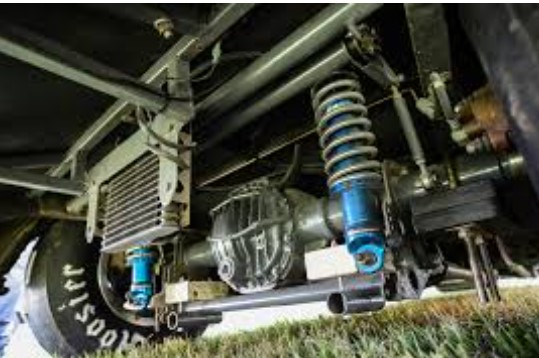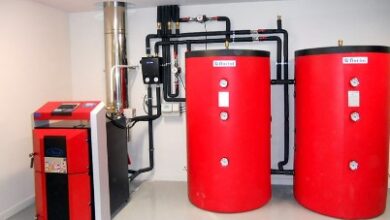Unleash the Speed: Tuning Your Drag Car with Coilovers

Introduction
In the high-stakes world of drag racing, every millisecond counts. To achieve peak performance, drag racers must fine-tune their vehicles to handle the immense power and speed involved. One of the most effective ways to enhance a drag car’s performance is by upgrading to coilovers. This comprehensive guide will explain how to tune your drag car with coilovers, covering the benefits, setup process, and essential tuning tips.
Understanding Coilovers
What Are Coilovers?
Coilovers are a type of suspension system that combines a coil spring and shock absorber into a single unit. They are adjustable, allowing drivers to fine-tune the suspension setup to suit their specific driving needs and conditions.
Benefits of Coilovers in Drag Racing
Revolutionize drag racing coilovers with enhanced launch control, superior handling, and customizable ride height:
- Adjustability: Coilovers offer adjustable ride height, damping, and spring rates, providing greater control over the car’s suspension setup.
- Improved Traction: By optimizing weight transfer and tire contact with the track, coilovers enhance traction, crucial for quick and stable launches.
- Enhanced Stability: Properly tuned coilovers improve stability during high-speed runs, reducing the risk of wheel hop and other handling issues.
- Customization: Coilovers allow racers to tailor the suspension to their specific vehicle and driving style, maximizing performance potential.
Setting Up Coilovers for Drag Racing
Choosing the Right Coilovers
Selecting the appropriate coilovers for your drag car is the first step. Consider factors such as:
- Quality: Opt for reputable brands known for their durability and performance.
- Adjustability: Ensure the coilovers offer sufficient adjustability for ride height, damping, and spring rates.
- Compatibility: Choose coilovers that are compatible with your vehicle’s make and model.
Initial Installation
Proper installation is crucial for achieving the best results. Follow these steps for initial setup:
- Raise the Vehicle: Use a jack to lift the car and secure it with jack stands.
- Remove Old Suspension: Remove the existing suspension components carefully.
- Install Coilovers: Install the coilovers, ensuring they are securely attached. Adjust the initial ride height to your desired setting.
- Tighten Bolts: Ensure all bolts and nuts are tightened to the manufacturer’s specifications.
Adjusting Ride Height
The ride height impacts weight transfer and traction. For drag racing:
- Lower the Front: A slightly lower front end can help improve aerodynamics and weight transfer to the rear wheels.
- Raise the Rear: Raising the rear can enhance rear tire grip during launches.
Setting Spring Rates
Spring rates determine how stiff or soft the suspension is. For drag racing:
- Stiffer Rear Springs: Help maintain traction by reducing squat during acceleration.
- Softer Front Springs: Allow better weight transfer to the rear wheels, improving launch traction.
Adjusting Damping
Damping controls the rate at which the suspension compresses and rebounds. Proper damping settings ensure stability and control:
- Compression Damping: Adjust for firm initial response, reducing body roll and improving stability.
- Rebound Damping: Set to control the return of the suspension after compression, preventing excessive oscillation.
Tuning Tips for Maximum Performance
Pre-Load Adjustment
Pre-load affects the initial tension on the springs, influencing the car’s launch characteristics:
- Increase Pre-Load: Tighten the springs for better weight transfer and improved traction.
- Decrease Pre-Load: Loosen the springs if the car is too stiff, affecting traction.
Weight Distribution
Proper weight distribution ensures optimal traction and stability:
- Corner Balancing: Adjust the coilovers to achieve balanced weight distribution across all four corners of the car.
- Adjust Ballast: Add weight to specific areas of the car to fine-tune balance and traction.
Track Testing
Testing your coilover setup on the track is essential for fine-tuning:
- Take Notes: Record settings and performance after each run.
- Make Incremental Changes: Adjust one setting at a time and test the results to identify the optimal setup.
- Analyze Data: Use data logging tools to analyze performance metrics and make informed adjustments.
- Track conditions demand precision in suspension adjustments. Whether navigating dry tarmac or slick surfaces, optimizing coilover settings is crucial for peak performance.
Regular Maintenance
Maintaining your coilovers ensures consistent performance:
- Inspect Regularly: Check for signs of wear and tear, such as leaks or damaged components.
- Clean and Lubricate: Keep the coilovers clean and lubricated to prevent corrosion and ensure smooth operation.
- Check Tightness: Periodically check all bolts and nuts to ensure they remain secure.
Conclusion
Tuning your drag car with coilovers can significantly enhance its performance, providing better traction, stability, and control on the track. By selecting the right coilovers, setting them up correctly, and making precise adjustments, you can unleash the full potential of your drag car. Remember to test thoroughly, make incremental changes, and maintain your coilovers regularly to achieve consistent, top-tier performance in every race.






